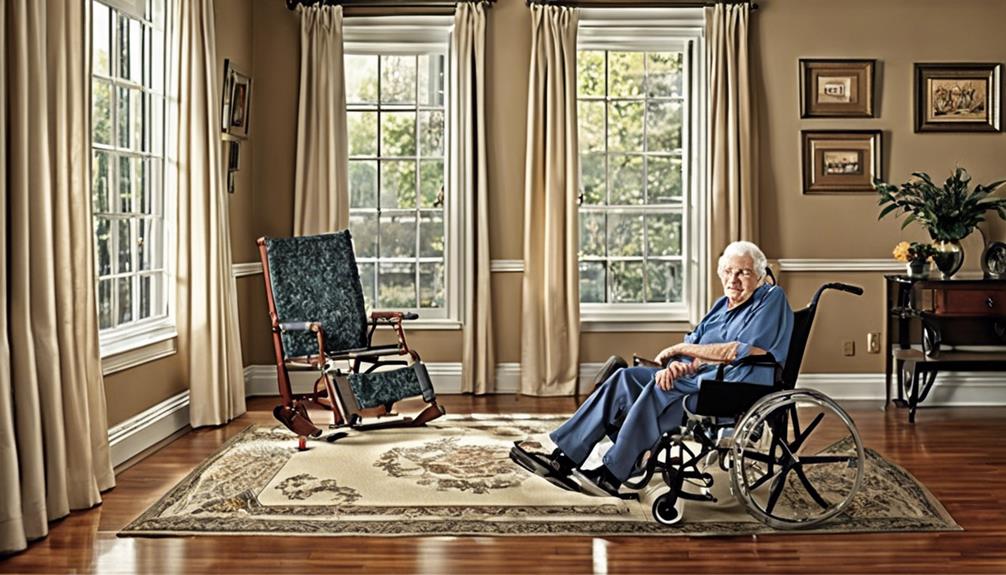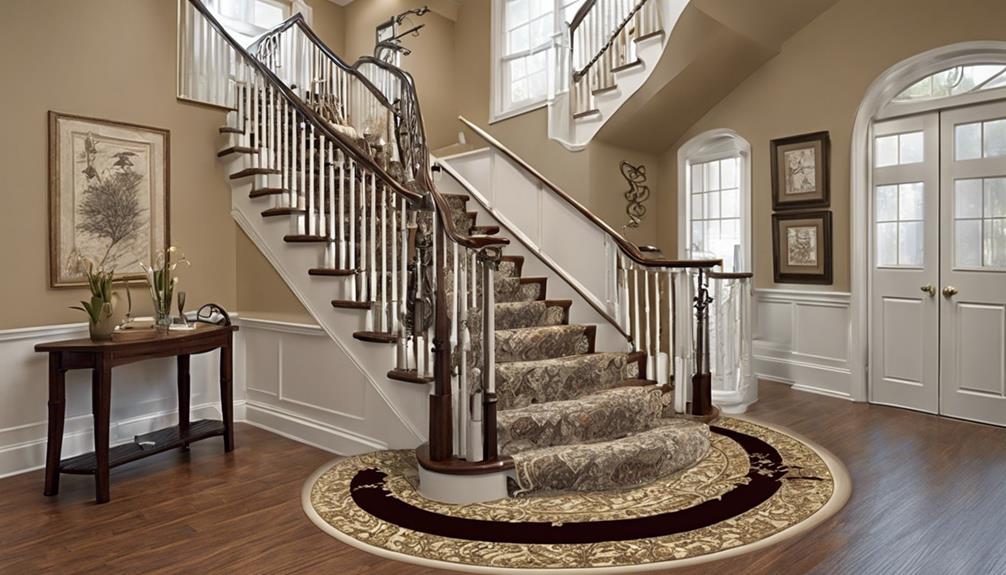When taking care of elderly individuals at home, it is crucial to prioritize their health and trust. Begin by conducting thorough evaluations of their physical, cognitive, and emotional well-being. Develop personalized care plans and regularly monitor any changes. Assess the safety of the home environment, implement necessary aids, and take precautions to prevent accidents. Maintain clear communication with caregivers and select reputable care agencies with comprehensive background checks. Establish clear expectations for care to avoid any misunderstandings. Be prepared for potential staffing shortages by being ready to implement innovative solutions. Create emergency protocols and utilize medical alert systems for added safety measures. For more information on ensuring the safety and trust in senior home care, refer to the detailed guide provided. Additionally, focus on creating a supportive atmosphere by encouraging social interactions and emotional wellness, as isolation can negatively impact seniors. Utilizing expert home care services can provide specialized assistance tailored to meet their specific needs, offering peace of mind to both seniors and their families. Continual communication and regular reassessment are essential in adapting care as situations change.
Key Takeaways
- Conduct thorough home safety evaluations to identify risks.
- Establish open communication channels with caregivers for trust.
- Evaluate caregiver background checks for trustworthiness.
- Set clear care expectations to avoid misunderstandings.
- Utilize innovative solutions like telehealth for care shortage.
Assessing Seniors Well-Being
In evaluating seniors' well-being, we conduct physical, cognitive, and mental health assessments to understand their overall health. These assessments help us identify any physical limitations, health concerns, or signs of decline that may impact their quality of life.
By carefully analyzing the results, we can tailor personalized care plans to address specific needs and guarantee their safety. Regular monitoring is vital, as it allows us to track any changes in their well-being and provide the necessary support promptly.
We use these assessments proactively to address any emerging issues and enhance the overall quality of life for seniors under our care. By staying vigilant and responsive to their needs, we can make a meaningful difference in the lives of the seniors we serve.
Our goal is to make sure that seniors feel supported, safe, and valued, promoting their well-being and independence for as long as possible.
Home Safety Evaluation
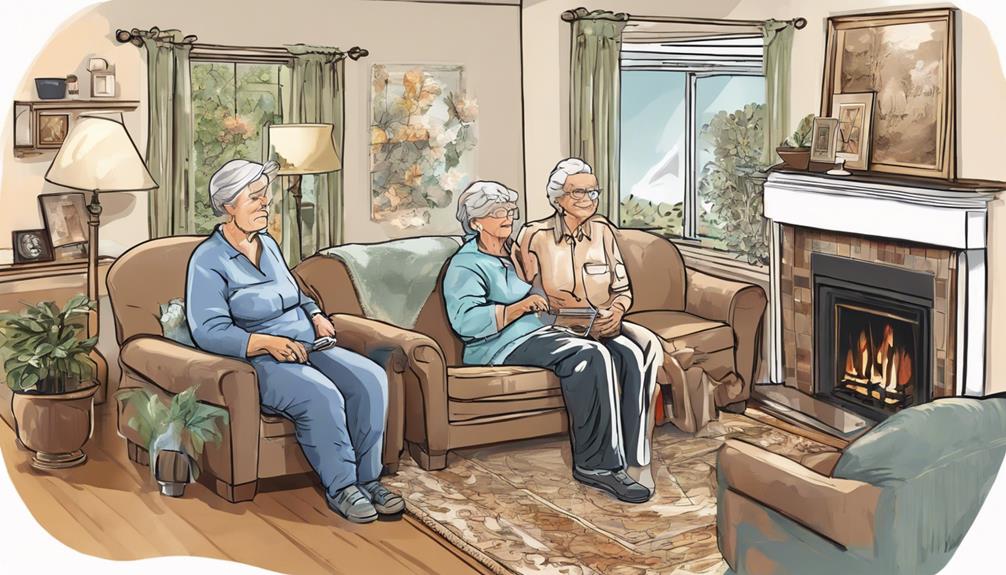
To give priority to the well-being of seniors, we emphasize the importance of conducting comprehensive evaluations of their home safety. A home safety assessment is vital to guarantee a secure environment for the elderly. By evaluating the living space for clutter, tripping hazards, and accessibility issues, we can pinpoint potential risks and take necessary precautions.
Installing grab bars, raised toilet seats, and adequate lighting based on the evaluation can greatly enhance home safety and prevent falls. Regular home safety evaluations are essential in preventing accidents and injuries, especially in high-risk areas like bathrooms and staircases. These assessments help caregivers and families proactively address safety concerns, creating a safe living environment for seniors.
Communication With Caregivers
Effective communication with caregivers is essential to guarantee seniors receive the best care possible at home. By providing clear care instructions, scheduling regular check-ins, and keeping communication channels open, we can establish a strong foundation for their well-being.
This proactive approach fosters trust, allows for prompt issue resolution, and promotes a positive caregiving environment.
Clear Care Instructions
Crafting concise and clear care instructions enhances caregiver understanding and improves the quality of senior home care services. Effective communication is key to providing appropriate and personalized care that meets seniors' specific needs.
Detailed care instructions serve as a reference guide for caregivers, reducing the risk of misunderstandings and errors in caregiving. Regular updates to care instructions help adapt to changing health conditions and preferences.
Regular Check-Ins
Regular check-ins with caregivers play an essential role in maintaining open communication and addressing concerns promptly to guarantee the best possible care for seniors.
These regular updates allow caregivers to stay informed about the senior's well-being and any changes in their condition. Communication during these check-ins helps build trust and transparency in the caregiver relationship, fostering a supportive environment.
Caregivers can provide valuable feedback during these interactions, which can lead to enhancements in the quality of care provided. Consistent communication with caregivers also promotes collaborative care, ensuring that all aspects of the senior's needs are met effectively.
Open Communication Channels
How can caregivers establish and maintain open communication channels to guarantee the best care for seniors in home care settings? Effective communication with caregivers reduces misunderstandings and enhances care quality. Regular channels help address concerns promptly, ensuring a positive caregiving experience. Open dialogue fosters trust, allowing timely issue resolution in senior home care.
- Promote Trust: Encourage open and honest communication to build trust between caregivers and seniors.
- Active Listening: Caregivers should actively listen to seniors' needs and concerns to safeguard their well-being.
- Regular Updates: Maintain regular communication channels to stay informed about any changes in the senior's condition or preferences.
Trusting Care Agencies
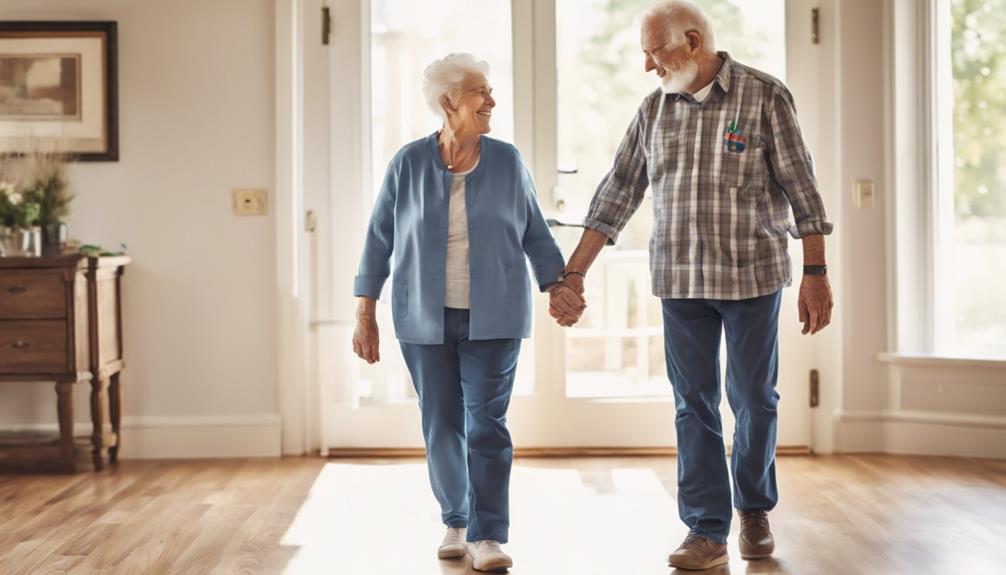
When searching for a care agency, it's essential to evaluate their background checks, making sure the caregivers are trustworthy and reliable.
Client testimonials play a pivotal role in understanding the agency's reputation and the quality of care they provide.
Transparency in operations, such as clear communication and setting expectations, helps foster trust between the agency, caregivers, and families.
Agency Background Checks
Ensuring thorough background checks on caregivers is an essential step in building trust and confidence in the abilities of care agencies to provide safe and reliable services for seniors. Care agencies meticulously review caregivers' qualifications, skills, and experience through detailed background checks. These checks include verifying credentials, certifications, and training to uphold high care standards.
Additionally, agencies thoroughly investigate any disciplinary actions or complaints against caregivers to maintain quality assurance. By conducting these rigorous screenings, care agencies demonstrate their commitment to ensuring the well-being and safety of seniors under their care. Trust is established through these careful evaluations, ensuring peace of mind for both seniors and their families.
Client Testimonials Importance
Highlighting the significance of client testimonials in evaluating and trusting care agencies is paramount in making informed decisions about senior care services. Client testimonials provide valuable insights into the quality of care agencies, offering first-hand accounts of experiences with specific caregivers. These testimonials highlight the professionalism, compassion, and reliability of the care agencies, assisting families in feeling reassured about their loved ones' safety and well-being. By reading these testimonials, potential clients can gauge the level of service provided and make decisions based on real experiences. Below is a table showcasing how client testimonials can impact the perception of a care agency:
| Benefits of Client Testimonials |
|---|
| Provides insights into care agency quality |
| Showcases professionalism and compassion |
| Builds trust with potential clients |
| Offers first-hand accounts of experiences |
Transparency in Operations
To establish trust with care agencies, transparency in operations is essential for clear communication and understanding of caregiver qualifications and services provided.
- Understanding the agency's policies on background checks, training programs, and caregiver selection builds trust in their operations.
- Transparency includes sharing information on care plans, schedules, and any changes in caregiver assignments promptly with the seniors and their families.
- Knowing how the agency handles feedback, complaints, and emergencies fosters trust and confidence in their ability to provide quality care.
Setting Care Expectations

Discussing and agreeing upon clear care expectations is vital for providing quality and reliable senior home care. Care expectations encompass a wide range of factors such as responsibilities, schedules, preferences, and boundaries.
By engaging in clear communication from the start, misunderstandings can be avoided, and a positive caregiving experience can be fostered. Trust is a fundamental component of senior care, and it's built through transparent discussions about various aspects of care provision, including tasks, routines, and emergency protocols.
Establishing mutual understanding and respect between caregivers and seniors is essential for developing a supportive and trusting relationship. When both parties are on the same page regarding what's expected, it creates a harmonious environment where seniors feel valued and caregivers can provide the best possible care.
Setting care expectations through open and honest communication is key to ensuring the well-being and satisfaction of seniors receiving home care.
Shortage of Care Workers

Amidst the growing concerns in the healthcare industry, the shortage of care workers poses significant challenges in ensuring consistent and quality in-home care for seniors. Factors such as the aging population, increased demand for in-home care, and high turnover rates among caregivers contribute to this shortage. The impact is particularly severe in rural areas, where access to essential services for elderly individuals is limited.
- 7.8 Million Job Openings: By 2026, there are projected to be 7.8 million job openings in the healthcare industry, highlighting the pressing need for more care workers.
- Innovative Solutions: Telehealth services and caregiver training programs are innovative solutions being implemented to address the shortage of care workers and enhance the quality of in-home care for seniors.
- Challenges in Consistent Care: The shortage of care workers can result in challenges in providing essential care, which is critical for the well-being of seniors in need.
Emergency Preparedness
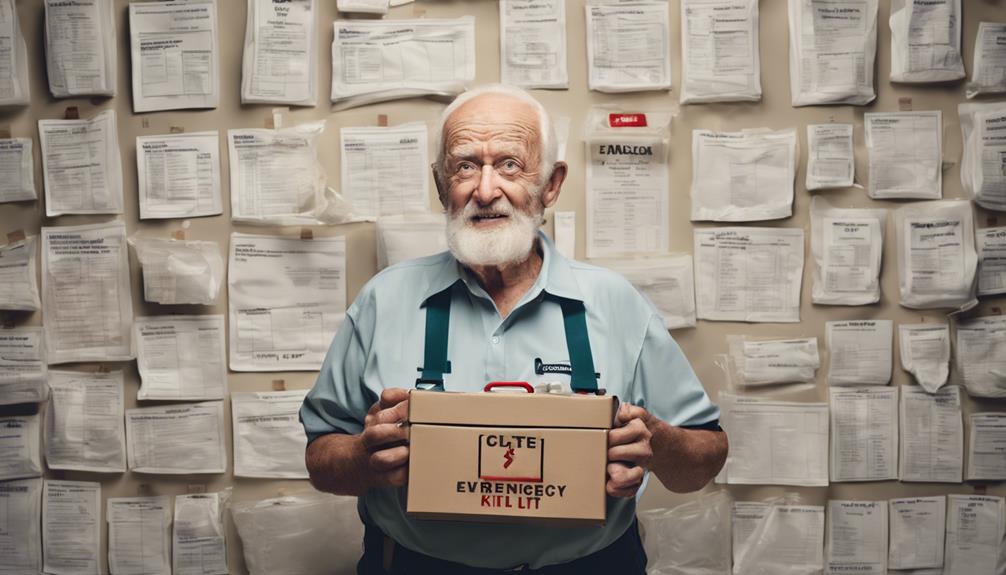
Our focus shifts to ensuring seniors' safety in emergencies through proactive measures and preparedness strategies. Emergency preparedness is essential for senior home care safety.
Medical alert systems are necessary, connecting seniors to monitoring centers for quick responses during emergencies. Establishing an emergency phone tree helps in promptly alerting caregivers and family members in case of accidents.
Financial assistance options such as home improvement grants can assist in making safety modifications to homes, improving emergency preparedness. Customizing medical alert systems to include emergency contacts streamlines the response process during critical situations.
It's important to be prepared for emergencies, as statistics show that every 11 seconds, an older adult is treated in the emergency room for a fall. By implementing these strategies and resources, we can help safeguard the safety and well-being of seniors in their homes.
Frequently Asked Questions
What Is a Home Safety Assessment for the Elderly?
A home safety assessment for the elderly involves evaluating the living environment to identify potential hazards and guarantee a safe home tailored to seniors' needs. It includes recommendations like installing grab bars and improving lighting for enhanced safety.
What Are the Safety Measures Needed in Taking Care of the Elderly Clients?
In caring for the elderly, we prioritize safety with measures like grab bars, good lighting, and hazard removal. Regular assessments and modifications enhance home safety. Bathroom enhancements like grab bars and raised toilet seats are essential for elderly clients' well-being.
What Are the Most Common Safety Problems Among Older Adults?
We often face common safety problems among older adults such as falls due to slippery floors and poor lighting. Lack of grab bars in bathrooms and cluttered walkways can also lead to accidents.
What Are the Prevention Safety for Senior Citizens?
We prioritize senior safety by exaggerating prevention measures with grab bars, proper lighting, and hazard removal. Our dedication to ensuring safety for seniors drives our commitment to creating secure home environments for their well-being.
Conclusion
In summary, senior home care safety and trust are essential for the well-being of our loved ones.
By evaluating their needs, examining home safety, and communicating effectively with caregivers, we can guarantee a safe and secure environment.
Trusting reputable care agencies and setting clear expectations are pivotal in providing quality care.
Despite the shortage of care workers, being prepared for emergencies is vital.
Remember, a little preparation now can make a significant difference in the future.
Stay safe and stay informed!
